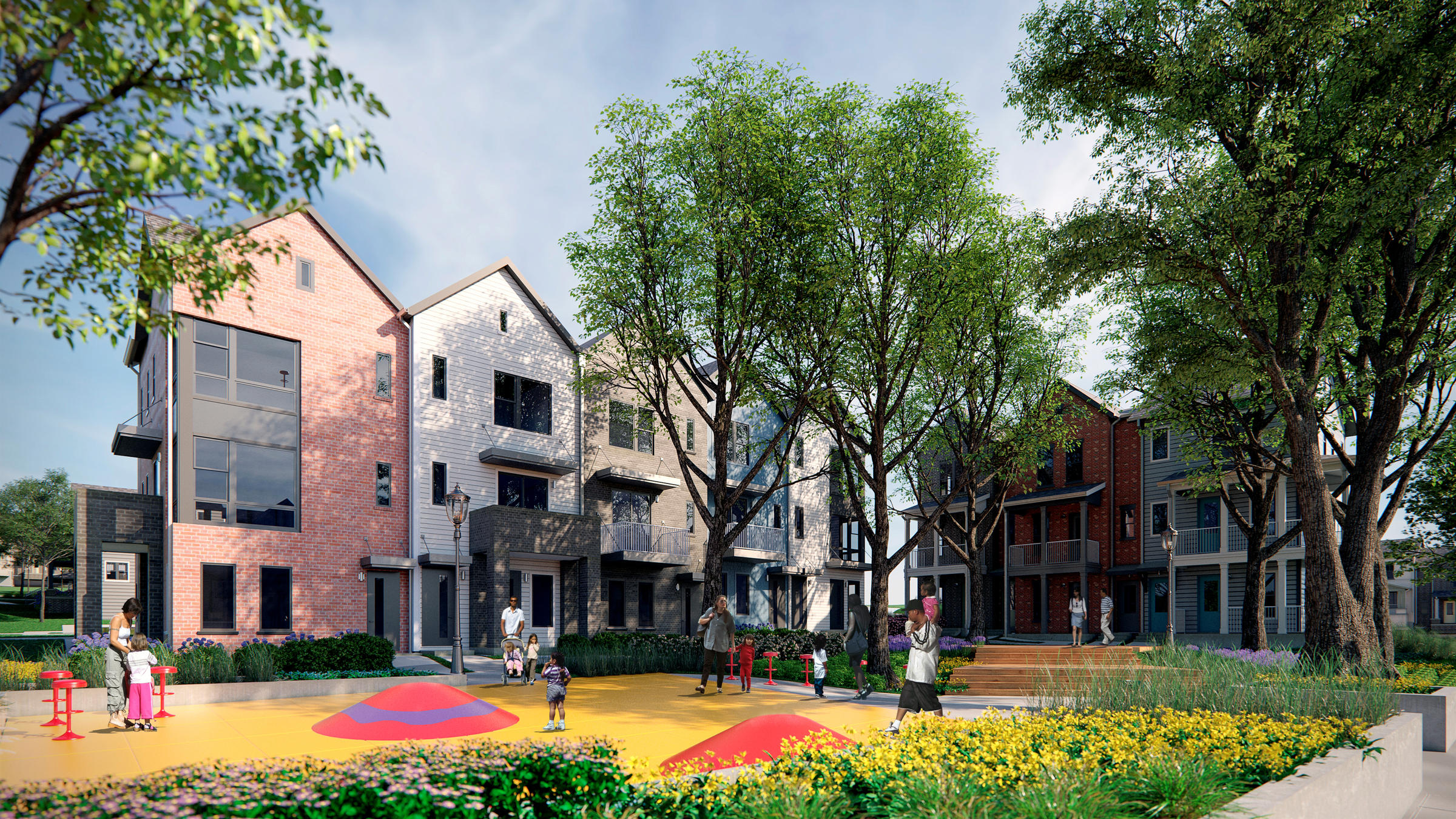
Nashville’s public housing agency has unveiled the design for the next phase in its ambitious plan to demolish and rebuild the James A. Cayce Homes, the city’s largest subsidized housing community.
The mixed-income complex is the first of its kind in the neighborhood. But the city has been scant on details and it’s leaving some residents anxious about the logistics of such a major overhaul.
The East Nashville complex, called Kirkpatrick Park, is a big step toward creating the city’s new vision of public housing, which aims to break up blocks of concentrated poverty with varying levels of income.
This means that of Kirkpatrick’s 94 apartments, about a third will be for low-income residents, another third for median income residents, and the last third will be market rate.
It’s a grand idea that the city’s housing director, Jim Harbison, says is critical for the social welfare of city.
“The reason we are working so hard at this is to have a neighborhood where people aren’t judged by the size of their wallet,” Harbison says.
The apartments won’t open until late 2018. But the renderings show a colorful mix of townhome structures, where no two are alike. There’s lots of green space and a pedestrian friendly boulevard cutting through. There’s retail space and multiple parks for kids to play. It’s a far cry from the squat cookie cutter brick buildings that make up the Cayce Homes now.

Architect Hunter Gee, of Smith Gee Studio, says Kirkpatrick will look nothing like the subsidized housing of the past.
“We’re not building a project or even traditional public housing. We’re building a neighborhood here,” Gee says.
63-year-old Cayce resident, Donna Myers, says the plans look like the neighborhood she always wanted to grow up in. A fairytale, she called it. But her big concern is will she be able to call it home. It’s unclear how residents will be chosen and what happens to those who are not?
“So there is a little trepidation as to who goes where,” Myers says. “Those who aren’t selected for this wonderful opportunity, where do we go?”
In total, the plan, called
Envision Cayce, is estimated to cost $600 million and aims to build 2,400 units of new housing. The city has promised to build those units before tearing down the old ones, so residents will always have a place to go. But the city has yet to hammer out the exact plan for how that will be done. About 2,000 people currently live in the Cayce Homes.
And the funding is being secured as the project moves forward. “How do you eat an elephant?” Harbison says. “One bite at a time.”


